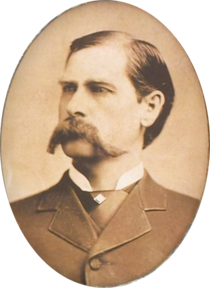The republican ideals set in motion by the American Revolution and its aftermath would shape the future of not just the fledgling United States but of numerous nations across the globe. In Women of the Republic: Intellect and Ideology in Revolutionary America, Linda K. Kerber demonstrates that the new political and social structures arising during and immediately following the Revolution did not quickly translate to women. In fact, it fell to women themselves to define a new political role for themselves, a role that came to be known as Republican Motherhood, combining the traditional domestic responsibilities of women with the new sense of civic duty inspired by the founding of the Republic.
Kerber divides her study into two major themes—the place of women in the legal and social structure of Revolutionary/post-Revolutionary America and the intellectual space occupied by women of that time as they sought to define their identities as members of the new Republic. Drawing extensively from legal and legislative records, as well as diaries, memoirs, and letters, Kerber demonstrates how the war both directly and indirectly affected women’s lives and the rapidly changing responsibilities that fell to them as a result. The identification of women as either patriots or loyalists gave them a new political presence, a presence severely tempered by the legal and societal restrictions that were the colonies’ inheritance from Great Britain. Kerber uses the legal processes of confiscation, coverture, and divorce to explain how women’s political identities were still tied to the role of wife; in a nation founded on liberty, women gained very little freedom as those three processes remained fixed in the legal system as well as in the minds and hearts of the citizens.
Kerber divides her study into two major themes—the place of women in the legal and social structure of Revolutionary/post-Revolutionary America and the intellectual space occupied by women of that time as they sought to define their identities as members of the new Republic. Drawing extensively from legal and legislative records, as well as diaries, memoirs, and letters, Kerber demonstrates how the war both directly and indirectly affected women’s lives and the rapidly changing responsibilities that fell to them as a result. The identification of women as either patriots or loyalists gave them a new political presence, a presence severely tempered by the legal and societal restrictions that were the colonies’ inheritance from Great Britain. Kerber uses the legal processes of confiscation, coverture, and divorce to explain how women’s political identities were still tied to the role of wife; in a nation founded on liberty, women gained very little freedom as those three processes remained fixed in the legal system as well as in the minds and hearts of the citizens.
Kerber explores the intellectual role of women by examining their education and the books, plays, and other works they consumed. Here Kerber finds a way of not only explaining the role of fiction in the intellectual development of women but also of pointing out that the women of the new Republic, while encouraged to read history, had very little material available to them on the history of members of their own sex. As Kerber completed her research and writing in the late 1970s, she likely found that the condition of women’s history had not changed greatly (or greatly enough) since those early days of the nineteenth century. While she does not say so explicitly, the contrast between the state of women’s history in the new Republic and in the late twentieth century United States cannot go unnoticed.
While Kerber does an excellent job of extrapolating data from a myriad of primary sources, including court records, government documents, first-person accounts, library records, etc., she does not cover a wide geographic area in her research. With the exception of noting the absence of divorce laws in the American south, Kerber largely ignores that area. While New England and Middle States women were experiencing the Revolution and their changing society, a reader wonders what their Southern sisters were doing. As Kerber’s research methodology is clear from her work, however, the door is open for further historians to apply her methods to the South, to enhance the study that Kerber has begun by expanding its geographical focus.
Published in 1980 and still studied today, Kerber’s Women of the Republic remains an interesting look into the lives of late-eighteenth, early-nineteenth century women and the manner in which women redefined themselves during and after the American Revolution. In addition, Women of the Republic serves as an excellent guide for future historians on how to make the most of the limited sources available from that time.





